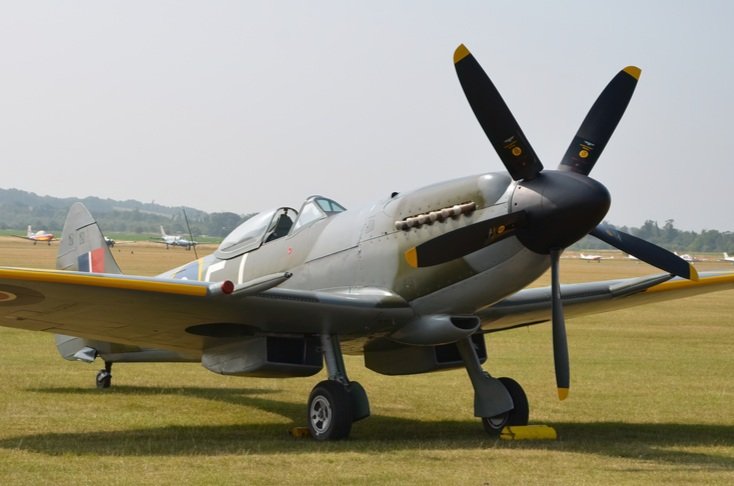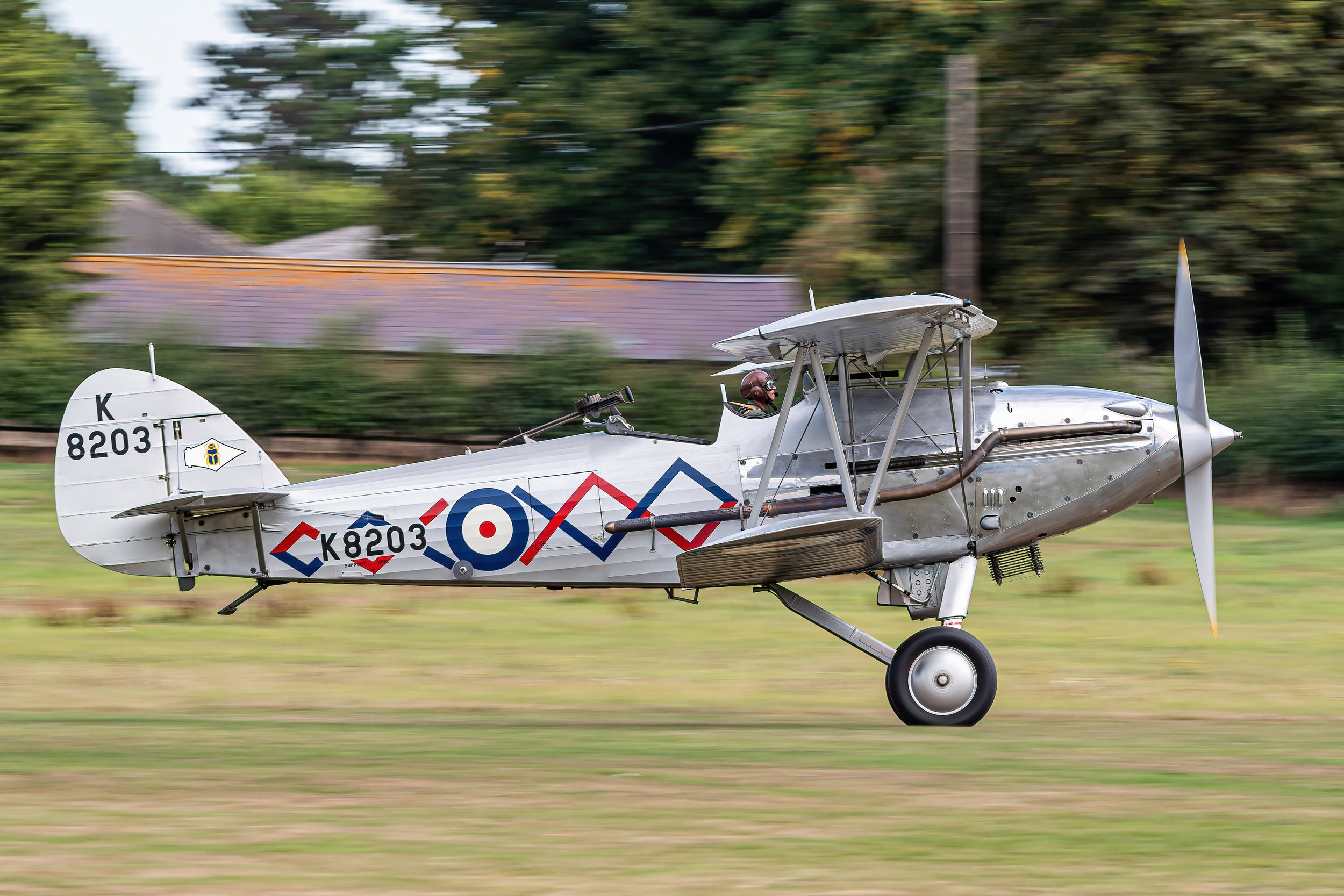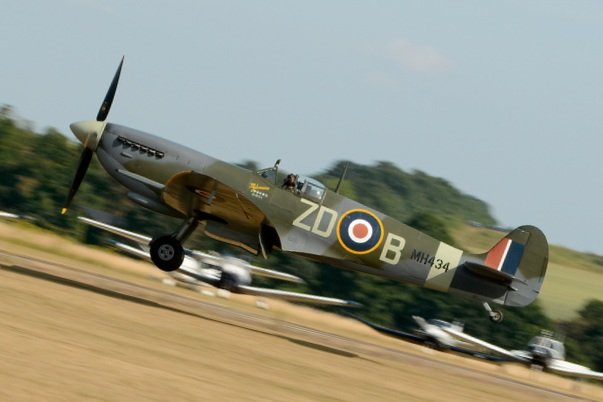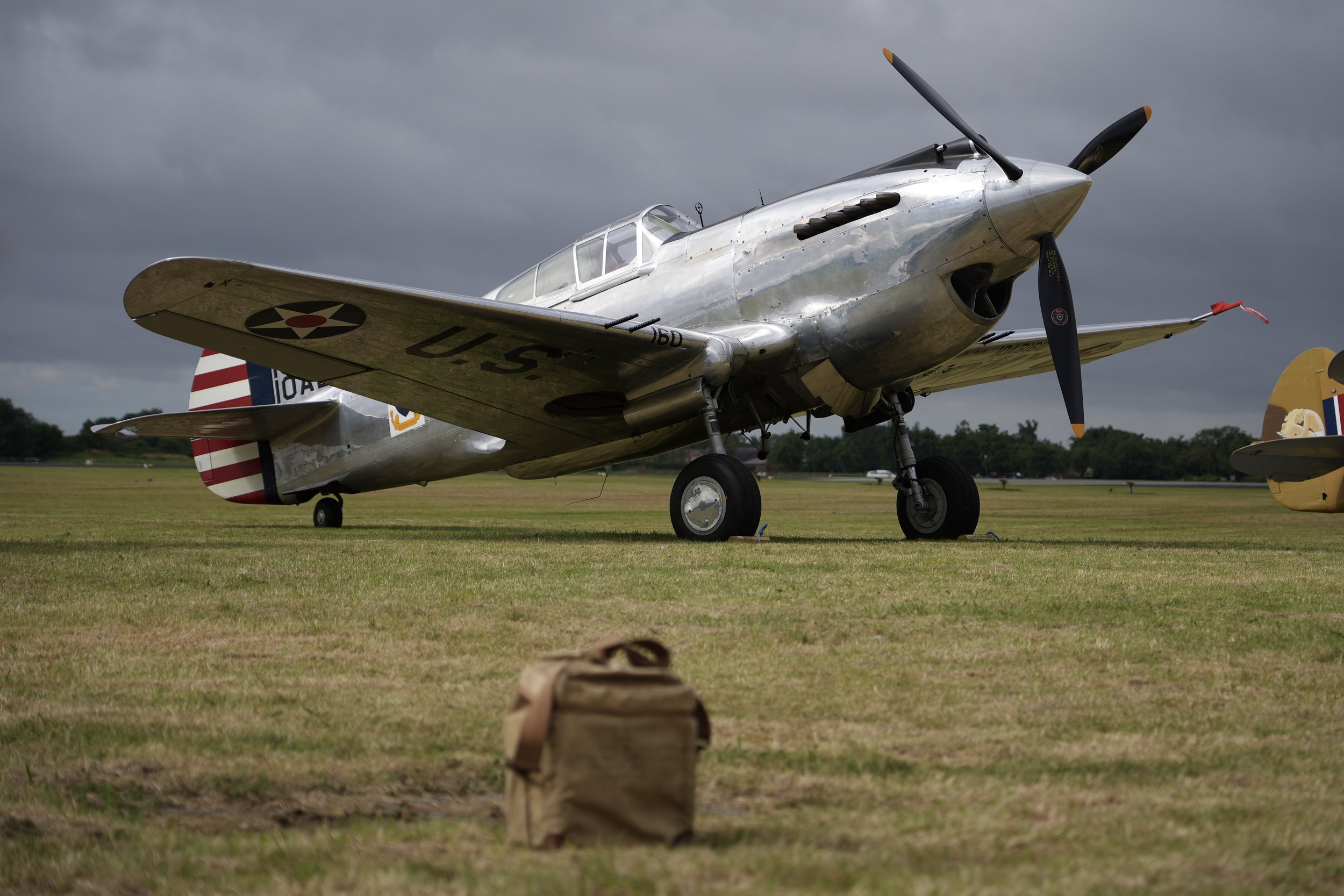Mustang G-BIXL
Year built
1945
Aircraft
P-51D-20-NA
Base
Steventon Airstrip
“Miss Helen” was constructed in 1945 as a P-51D-20-NA by North American at Inglewood in California and taken on strength with the United States Army Air Force (USAAF) with serial number 44-72770 where it served with 87th Fighter Sqn of the 352nd FG at Bodney. As soon as it arrived “Miss Helen” became the personal aircraft of Capt. Ray H Littge coded HO-M and is recorded as having been flown on a number of combat missions by Littge which included destroying 6 confirmed ground kills on April 17th 1945.
In early 1945 the 352nd was deployed to Belgium where they operated from both AAF Station Y-29 at Asch and later at AAF Station A-84 at Chievres so for a portion of “Miss Helens” operational career with Littge the Mustang was based in Belgium but the 352nd returned to Bodney in early April 1945 and it is known that Littge was flying “Miss Helen” out of Bodney during very successful ground attack operations on 16th-17th April 1945.
After the end of WW2, many surplus 8th AF Mustangs were flown to Furth Nurnberg in Germany for storage and “Miss Helen” was one of these and with its US codes painted out it was purchased by the Swedish Government in February 1948. It was then ferried to Sweden and joined the Swedish Air Force as FvNr 26116 and then served with the Swedish Air Force at Ostersund and at Uppsala. By 1953 the Swedish Mustangs had reached the end of their service life and had become obsolete and this Mustang was then put up for disposal and ended up with the Israeli Air Force being allocated the IAF number 43. No records exist of its combat operations in the IAF however when it was discovered by Robs Lamplough in 1978 it still had rocket rails fitted and it is highly likely that it saw service in the 1956 Sinai Campaign flying against Egyptian targets. After it was retired from IAF service it was towed to a kibbutz at Ein Gedi and was installed in a children’s playground from where it was discovered by Robs Lamplough.
Robs had been able to buy IDF43 plus three other derelict Mustangs, several spitfires and a Yak during 1978 and he arranged for them all to be dismantled, crated and shipped to Duxford. At this time no one had any idea of the significance of IDF 43s history with the 352nd FG and it was not positively identified as a genuine combat veteran blue nose until the restoration process had commenced. IDF 43 was considered by Robs to be in the best overall condition for restoration to airworthiness project and work on it started at Duxford in November 1978. Whilst most of the original cockpit instruments and fittings had been stripped out in other areas the aircraft was still remarkably intact – for example in the gun bays the wartime boresight information panel was intact. Robs also had a number of other projects underway at this time including a Hispano 109 Buchon and initial progress was slow however in 1982 he appointed a full-time engineer Norman Chapman to lead the restoration project and substantial progress began to be made. The aircraft was registered G-BIXL.
In 1985 Robs moved his aircraft collection to North Weald where the restoration of G-BIXL was finished by Norman Chapman and his team. The first engine runs were carried out in April 1987 and the aircraft was first flown on May 5th, 1987 by the late Mark Hanna. Robs Lamplough was checked out in the Mustang shortly afterwards and he then regularly flew this Mustang for the next 26 years.
Initially, G-BIXL was finished in an all-over silver scheme but it also was flown in the Memphis Belle film by Pete John in the summer of 1989 when it was painted in an all-over green and white scheme coded AJ-L with the nose art of “Miss L”.
After the filming was over Robs kept it in the film scheme for a while but then in the winter of 2000 the decision was taken to repaint the aircraft into its totally authentic 352nd colours as “Miss Helen” and it has retained these colours ever since. In 2004 after attending the RIAT Airshow Robs had an off-airport wheel up landing in the Mustang due to a fuel supply problem however John Hart and his team carried out repairs and the aircraft flew again in 2007. A further mishap occurred in July 2008 when the aircraft suffered a heavy landing at Duxford at the end of the Flying Legends Airshow when the engine began to run rough and lose power. On that occasion, due to the skill of its pilot Pete John, a major incident was avoided but the aircraft still had damage to its landing gear, engine and prop but once again John Hart and his team successfully completed the necessary repairs and today this very historic Mustang is fully airworthy.
In 2014 Robs Lamplough decided to retire from UK display flying and Miss Helen was sold to its new owner Robert Tyrrell from Steventon near Abingdon. The aircraft is maintained by the Duxford based Aircraft Restoration Co. and can be seen regularly flying from there or from the owner’s airstrip at Steventon.
| Back to Top |
North American P-51D-20-NA Mustang
The North American Aviation P-51 Mustang is an American long-range, single-seat fighter and fighter-bomber used during World War II and the Korean War, among other conflicts. The Mustang was designed in April 1940 by a design team headed by James Kindelberger of North American Aviation (NAA) in response to a requirement of the British Purchasing Commission. The Purchasing Commission approached North American Aviation to build Curtiss P-40 fighters under license for the Royal Air Force (RAF). Rather than build an old design from another company, North American Aviation proposed the design and production of a more modern fighter. The prototype NA-73X airframe was rolled out on 9 September 1940, 102 days after the contract was signed, and first flew on 26 October.
The Mustang was designed to use the Allison V-1710 engine, which had limited high-altitude performance in its earlier variants. The aircraft was first flown operationally by the RAF as a tactical-reconnaissance aircraft and fighter-bomber (Mustang Mk I). Replacing the Allison with a Rolls-Royce Merlin resulted in the P-51B/C (Mustang Mk III) model, and transformed the aircraft's performance at altitudes above 15,000 ft (4,600 m) (without sacrificing range), allowing it to compete with the Luftwaffe's fighters. The definitive version, the P-51D, was powered by the Packard V-1650-7, a license-built version of the two-speed, two-stage-supercharged Merlin 66, and was armed with six .50 calibre (12.7 mm) AN/M2 Browning machine guns.
From late 1943, P-51Bs and P-51Cs (supplemented by P-51Ds from mid-1944) were used by the USAAF's Eighth Air Force to escort bombers in raids over Germany, while the RAF's Second Tactical Air Force and the USAAF's Ninth Air Force used the Merlin-powered Mustangs as fighter-bombers, roles in which the Mustang helped ensure Allied air superiority in 1944. The P-51 was also used by Allied air forces in the North African, Mediterranean, Italian, and Pacific theatres. During World War II, Mustang pilots claimed to have destroyed 4,950 enemy aircraft.
At the start of the Korean War, the Mustang, by then redesignated F-51, was the main fighter of the United States until jet fighters, including North American's F-86, took over this role; the Mustang then became a specialized fighter-bomber. Despite the advent of jet fighters, the Mustang remained in service with some air forces until the early 1980s. After the Korean War, Mustangs became popular civilian warbirds and air racing aircraft.
| Back to Top |










| Back to Top |

































